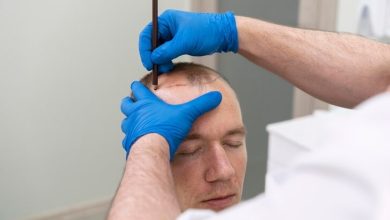How to Respond When Someone’s Having a Seizure

Seizures can strike anyone, anytime, and witnessing one can be an overwhelming and scary experience. It’s a neurological condition that affects the brain’s electrical activity, and it’s essential to know how to respond in such situations.
Here are a few things one can do to respond to someone having a seizure:
-
Stay Calm
In case you encounter someone having a seizure, it’s important to remain calm and composed, even though it may be frightening to witness. Remember that seizures are typically not life-threatening, and they usually stop on their own. If you panic, the situation could worsen, and you may not be able to respond effectively.
-
Keep Other People Out of the Way
Another important step when dealing with someone having a seizure is to ensure that other people in the vicinity are aware of the situation and keep a safe distance from the individual. This helps prevent any accidental injuries or interference during the seizure. If the person is in a public area, it’s important to ask bystanders to call for medical assistant immediately.
-
Clear Hard or Sharp Objects Away
During a seizure, it’s important to remove any objects that could potentially cause harm to the person. This includes anything hard, sharp, or dangerous. If possible, gently move the person away from any furniture or obstacles that could harm them. This will ensure that the individual is safe from harm and can help prevent any further injuries.
-
Don’t Try to Stop the Seizure
It’s important to remember that attempting to hold down the person or stop the seizure in any way can be hazardous for both you and the individual having the seizure. Therefore, it’s crucial to avoid doing so. Instead, concentrate on keeping the person safe and comfortable until the seizure naturally ends.
-
Turn the Person Onto Their Side
When a person is having a seizure, they may lose control of their body and become unable to swallow or clear their airway. This can lead to the risk of choking on saliva or vomit. By turning the person onto their side, any saliva or vomit can flow out of their mouth and prevent it from entering their lungs, which could lead to a serious respiratory issue. And be sure to contact emergency services after someone has a seizure so that they can be checked out.
Types of Seizures
Neurological disorders can disrupt the electrical activity of the brain, and seizures are no exception. There exist various types of seizures, each with its unique set of characteristics and symptoms. Take a look at some of the most commonly occurring types of seizures:
Tonic Seizures
Tonic seizures are a type of seizure that involve sudden stiffening of the muscles. These seizures can affect a specific part or the entire body, and usually, they can last several minutes and are often followed by a period of confusion.
Atonic Seizures
Atonic seizures or drop seizures involve a sudden loss of muscle tone. This sudden loss of muscle control can result in the individual collapsing or falling to the ground. Typically, atonic seizures last for just a few seconds but can result in injury if the person falls.
Myoclonic Seizures
Brief and involuntary muscle contractions or jerks are the defining features of myoclonic seizures. These seizures can affect one or multiple body parts and often occur in clusters. Typically, myoclonic seizures last several seconds to a few minutes and may result in a loss of consciousness.
Common Causes of Seizures
Several factors, such as medical conditions, genetic disorders, and brain injuries, can lead to seizures. Take a look at some of the most frequent causes of seizures:
Epilepsy
Recurring seizures are the primary symptom of epilepsy, which is a common neurological disorder. Epilepsy is the most frequent cause of seizures in both children and adults. A physician or neurologist may recommend the use of a portable EEG device to better understand your brain activity and how epilepsy specifically affects you.
Head Injuries
Concussions or traumatic brain injuries are examples of head injuries that can cause seizures. These types of injuries can disturb the standard electrical activity in the brain and heighten the likelihood of seizures.
Brain Infections
Infections like encephalitis or meningitis can cause seizures as they directly impact the brain. These infections can harm the brain and interfere with its regular operations, leading to seizures.
Stroke
When the blood flow to the brain is disrupted, brain damage occurs. This is known as a stroke. Seizures can develop in some people as a result of this damage.
Brain Tumors
Seizures can be caused by brain tumors, which interrupt the usual functioning of the brain. As the size of the tumors grows, the possibility of seizures also increases.
Alcohol or Drug Withdrawal
Withdrawal from alcohol or drugs can trigger seizures in individuals who are addicted to these substances. Changes in the brain’s electrical activity during withdrawal can result in seizures.
Conclusion
Although witnessing someone having a seizure can be frightening, it’s vital to stay calm and take appropriate action to ensure their safety. Study the above tips so that you can know what to do when someone is having a seizure.




